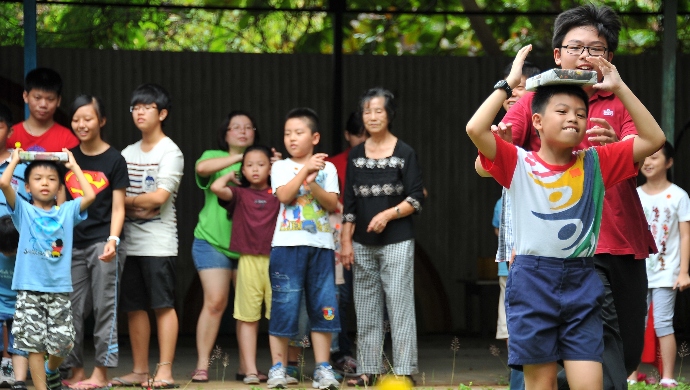Rather than help 10,000 people make a billion dollars

Centuries of quality education has mothered technology into this world and now we see technology helping education reach higher levels of quality.
Edtech plays an incipient role in enhancing our intellectual capabilities to meet the demands of an ever-evolving world. Many governments, schools and big companies across the world have already invested heavily in its value.
However, even with such implementations in place, the socioeconomic gap continues to widen with the richest one per cent owning a very disproportionate 45 per cent of the world’s wealth.
People are beginning to accuse edtech of rubbing salt to the wound by promoting inequality since not every student has access to technology. And, making matters worse, is the fact that the majority of edtech companies target middle to upper-class students — whose parents can afford and want to pay for their services and high-end devices.
This leaves behind the kids at the bottom of the class-pyramid, which ironically makes up the largest part of our global population.
This was an issue Solve Education identified and is trying to re-solve by bringing free, engaging educational software to low-end phones through an app.
“Going digital can divide people, but at the same time, it can be an opportunity to bridge the socioeconomic gap — it depends on how we design edtech,” says Janine Teo, CEO of Solve Education, about education inequality.
Solve Education is a non-profit organisation that is building mobile games designed to help kids learn. Its flagship game, Dawn of Civilization, teaches people english while they build their own city.
Some of the main barriers edtech companies find with poorer communities is running a product that can function on substandard phones, support low to no internet connectivity and use small memory space.
Solve Education has been able to break down each of these barriers and has even incorporated a social-gaming element into the learning process.
Explaining this decision, Teo tells e27,
“Some of the kids out there do not have supportive parents or good quality teachers, so how do we get them to learn then? Since they spend most of their time on social media or gaming apps, we decided to make an app that can engage them in those elements as well.”
Also Read: Go-Jek moves PayLater offline to help people pay for goods monthly
According to UNESCO’s 2018 report, one out of five children do not go to school. Teo explains that the app was specially engineered to cater to that 20 per cent, which she herself has crossed paths with from over 40 countries of travel.
Her previous jobs in the hospitality sector landed her (literally) in many places across many oceans. Prior to that, she was a computer engineer based in Paris. Where Teo wanted to go, her life naturally followed — until it presented an obstacle in the form of a friend’s question.
“What’s your purpose in life?”
This friend, who is now the chairman of Solve Education, kindled some major introspection within Teo and she finally came to a conclusion that she would rather “help a billion helpless people than help 10,000 people make a billion dollars”.
Her previous jobs provided her plenty of insight and exposure to the marginalised, lower-class communities outside the sheltered bubble many of us are blessed to live in. This motivated her to switch careers and fulfil her purpose.
On why she chose to pursue her vision in the field of education, she shared that, “If we look at all the different challenges the world has today, we find that education is the main cause for them and yet, also the core element that can bring about a lot of changes”.
Today, Solve Education carries the torch for creating a world where all students can access quality education and gain confidence in their ability to learn. It is currently established in Indonesia, Singapore and India — the latter of which has at least 35 million children deprived of education.
Interestingly, the app has felt five times the retention rate for normal mobile games, which is an incredible feat for an educational game, given the low retention rates of its counterparts in the market.
However, Teo recognises that edtech is not a cure-all and that there will always be a group who won’t have access to even basic technology.
“Thankfully though,” she says, “experts have predicted that by 2020, at least 70 per cent of the world will have a basic smartphone and intermittent internet connectivity and Solve Education will leverage on that growing number”.
Also Read: eToro aims to make buying Bitcoin as easy as buying an Apple share
Education is essential for every child, and should not be made exclusive to those who can afford it.
“If everyone can do what they do best, the world would be a better place,” Teo says with conviction.
So, here’s to Solve Education enabling children to discover what they’re best in, and making the world a better place!
—
The post How Solve Education wants to help a billion people appeared first on e27.